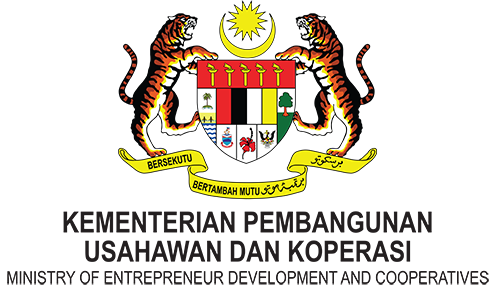|
MONEY MATTERS |
Credit Management
Records Management
A record can be either a tangible object or digital information: for example, birth certificates, medical x-rays, office documents, databases, applicationdata, and e-mail. Records management is primarily concerned with the evidence of an organization's activities, and is usually applied according to the value of the records rather than their physical format.
- Definitions of records management; In the past, 'records management' was sometimes used to refer only to the management of records which were no longer in everyday use but still needed to be kept 'semi-current' or 'inactive' records, often stored in basements or offsite. More modern usage tends to refer to the entire 'lifecycle' of records from the point of creation right through until their eventual disposal. The ISO 15489: 2001 standard defines records management as "The field of management responsible for the efficient and systematic control of the creation, receipt, maintenance, use and disposition of records, including the processes for capturing and maintaining evidence of and information about business activities and transactions in the form of records". The ISO defines records as "information created, received, and maintained as evidence and information by an organization or person, in pursuance of legal obligations or in the transaction of business". The International Council on Archives (ICA) Committee on Electronic Records defines a record as "a recorded information produced or received in the initiation, conduct or completion of an institutional or individual activity and that comprises content, context and structure sufficient to provide evidence of the activity." The key word in these definitions is evidence. Put simply, a record can be defined as "evidence of an event".
- Practicing records management; A Records Manager is someone who is responsible for records management in an organisation. The practice of records management may involve:
- Planning the information needs of an organization
- Identifying information requiring capture
- Creating, approving, and enforcing policies and practices regarding records, including their organization and disposal
- Developing a records storage plan, which includes the short and long-term housing of physical records and digital information
- Identifying, classifying, and storing records
- Coordinating access to records internally and outside of the organization, balancing the requirements of business confidentiality, data privacy, and public access.
- Executing a retention policy on the disposal of records which are no longer required for operational reasons; according to organizational policies, statutory requirements, and other regulations this may involve either their destruction or permanent preservation in an archive.
- setting policies and standards;
- assigning responsibilities and authorities;
- establishing and promulgating procedures and guidelines;
- providing a range of services relating to the management and use of records;
- designing, implementing and administering specialized systems for managing records; and
- integrating records management into business systems and processes.
Managing physical records involves different disciplines and may draw on a variety of forms of expertise.Records must be identified and authenticated. This is usually a matter of filing and retrieval; in some circumstances, more careful handling is required.
If an item is presented as a legal record, it needs to be authenticated. Forensic experts may need to examine a document or artifact to determine that it is not a forgery, and that any damage, alteration, or missing content is documented. In extreme cases, items may be subjected to a microscope, x-ray, radiocarbon dating or chemical analysis. This level of authentication is rare, but requires that special care be taken in the creation and retention of the records of an organization.
Records must be stored in such a way that they are accessible and safeguarded against environmental damage. A typical paper document may be stored in a filing cabinet in an office. However, some organisations employ file rooms with specialized environmental controls including temperature and humidity. Vital records may need to be stored in a disaster-resistant safe or vault to protect against fire, flood, earthquakes and conflict. In extreme cases, the item may require both disaster-proofing and public access. Civil engineers may need to be consulted to determine that the file room can effectively withstand the weight of shelves and file cabinets filled with paper; historically, some military vessels were designed to take into account the weight of their operating procedures on paper as part of their ballastequation(modern record-keeping technologies have transferred much of that information to electronic storage). In addition to on-site storage of records, many organizations operate their own off-site records centers or contract with commercial records centers.
Tracking the record while it is away from the normal storage area is referred to as circulation. Often this is handled by simple written recording procedures. However, many modern records environments use a computerized system involving bar code scanners, or radio-frequency identification technology (RFID) to track movement of the records. These can also be used for periodic auditing to identify unauthorized movement of the record.
Disposal of records does not always mean destruction. It can also include transfer to a historical archive, museum, or private individual. Destruction of records ought to be authorized by law, statute, regulation, or operating procedure, and the records should be disposed of with care to avoid inadvertent disclosure of information. The process needs to be well-documented, starting with a records retention schedule and policies and procedures that have been approved at the highest level. An inventory of the records disposed of should be maintained, including certification that they have been destroyed. Records should never simply be discarded as refuse. Most organizations use processes including pulverization, paper shredding or incineration.
Commercially available products can manage records through all processes active, inactive, archival, retention scheduling and disposal. Some also utilizes RFID technology for the tracking of the physical file.
The general principles of records management apply to records in any format. Digital records (almost always referred to as electronic records) raise specific issues. It is more difficult to ensure that the content, context and structure of records is preserved and protected when the records do not have a physical existence.
Particular concerns exist about the ability to access and read electronic records over time, since the rapid pace of change in technology can make the software used to create the records obsolete, leaving the records unreadable. A considerable amount of research is being undertaken to address this, under the heading of digital preservation. The Public Record Office Victoria (PROV) located in Melbourne, Australia published the Victorian Electronic Records Strategy (VERS) which includes a standard for the preservation, long-term storage and access to permanent electronic records. The VERS standard has been adopted by all Victorian Government departments. A digital archive has been established by PROV to enable the general public to access permanent records.
Electronic Tax Records are computer-based/non-paper versions of records required by tax agencies like the Internal Revenue Service. There is substantial confusion about what constitutes acceptable digital records for the IRS, as the concept is relatively new. The subject is discussed in Publication 583 and Bulletin 1997-13, but not in specific detail.
Businesses and individuals wishing to convert their paper records into scanned copies may be at risk if they do so. For example, it is unclear if an IRS auditor would accept a .jpg, .png, or .pdf format scanned copy of a purchase receipt for a deducted expense item.
Financial Forecast
Obtaining Finance
In either case, you've done a feasibility study and your research and financial forecasts indicate that your idea is viable. There's only one problem, you don't have enough money to start.
All businesses require some form of financing. The best way to access funds is to have some form of collateral. Equity in property is considered one of the best resources. However, if that's not possible there are several options you may consider to finance your business.
- Personal savings
| EMPLOYING PEOPLE |
Employee or Contractor?
You can employ almost any local citizens. A person whom you employ under a contract of service is an employee.In Peninsular Malaysia, employees are being defined in the Employment Act 1955 whereas in Sabah and Sarawak, an employee is defined in the Labour Ordinance (Sabah Cap. 67) and Sarawak Labour Ordinance (Cap. 76) respectively.
An employee under the Employment Act 1955 means :
- any person whose earning between RM1,500 and RM5,000 per month under a contract of service with an employer which covers wages, allowances or other cash benefits
- any person who irrespective of the wages earns in a month has entered into a contract of service with an employer and disengaged in >> manual labour >> engaged in the operation of mechanically propelled vehicles
- one who supervises and oversees employees in manual labour
- any person engaged in any capacity in any vessel registered in Malaysia with certain exception
In the event of any complaints on employment to be made by an employee, the said employee can lodge a complaint to the nearest Department of Labour Office or JabatanBuruh.
In the event of cases of unfair dismissal, employees covered and not covered under these Acts or Ordinance can voice their complaint to the Industrial Relations Department.
An employer is forbidden from engaging women to carry out underground, industrial and agricultural work between 10:00 PM to 5:00 AM without exemption from the Directory General of Department of Labour.
Types of Employment
There are a variety of employment types that you can offer new staff including full-time, part-time, casual, fixed term employment, traineeships and apprenticeships
Full-time employees work on a regular weekly basis and are expected to work a full week.
Part-time employees usually work on a regular ongoing basis. They are paid on a pro rata basis. They are entitled to the following to:
- annual, personal, sick leave and carer's leave;
- be paid for public holidays falling on days on which they would otherwise be working; and
- long service leave and bereavement leave.
Casual employees, otherwise known as freelance employees, are employed on an irregular basis as needed. They can work as many hours as agreed between the employer and the employee. They:
- have no expectation of ongoing employment
- are free to refuse offers of work
- are paid a loading (a minimum of 20 per cent, but some awards provide for a higher loading), but no personal or sick leave or annual leave entitlement
- are entitled to unpaid bereavement leave
- long service leave provisions apply.
Fixed term or contract employees are hired for a fixed period of time, for example, for a specific project, or to replace an employee on sick leave or parental leave.
You should provide the employee with an agreement in writing that sets out the length of the employment contract. Fixed term employees are entitled to the same annual, personal and other leave entitlements as full-time employees, but on a proportional basis for the period of their employment.
Apprentices are generally training to be tradespeople, while trainees are generally learning the skills of a non-trade occupation. Both involve:
- a registered training agreement;
- practical work;
- learning skills on and off the job; and
- rates of pay covered by an award or agreement,
You can use a probationary period to make sure a new employee is suitable for the job. A probationary period can cover the first to six months of a new employee's employment.
During this time the employee's performance can be assessed and if need be their employment can be terminated. You should tell your employee about the length of the probation, how their performance will be assessed, and employer and employee expectations should be agreed in writing before the employment begins.
Probationary employees can be dismissed during the probationary period.
Some employees, rather than being paid a wage or salary, are paid by:
- piece work – the paying of a set amount for completing a specific task
- commission – the paying of a percentage for each sale made
- retainer plus commission - the paying of a fixed amount plus commission.
Recruitment and Selection
Step 1: Define the job, know what you're looking for
Clarify what job you are recruiting for. Consider the tasks the new recruit will need to complete and the people that they will be working with. You need to find someone with the right skills to do the job and the personality to fit your work culture.
Now that you've clearly defined the position, and the skills and abilities a person needs to do the job it's time to attract candidates. The most obvious way to attract candidates is to advertise but remember almost 80% of vacancies aren't advertised! There are plenty of other channels to explore.
Now that you've used your networks and advertised the job, how are you going to handle the applications? Think about the information that will help you decide if you want to interview a job applicant.
For the best results during the interview, make sure you take the time to carefully plan it out beforehand.
The selection process consists of a number of stages, including making the decision on who is the most suitable applicant, making an offer of employment, and sending letters to unsuccessful applicants.
You will need to make a decision on who is the most suitable applicant for the position, based on information obtained from the application, interview and speaking to referees. Which applicant measures up best against the selection criteria and job description? If you find that no-one is suitable, sometimes it's better to re-advertise the position, or hold a second round of interviews before making a final decision.
Ring the successful applicant as soon as possible and let them know the news. You can send a written offer of employment at the same time, but don't wait and risk losing that applicant.
You may wish to invite the successful applicant to the office to discuss details of the position, to meet other team members, or to attend an upcoming social function. Follow up with a formal letter confirming the appointment, including remuneration and other terms of employment and details of probationary period, if there is one.
It is recommended that you provide all employees with a written contract of employment. While not compulsory, it is an excellent way to outline the rights, obligations and conditions of employment. A well written contract should provide clear understanding to both the employer and employee.
Any contract of employment must meet all of the conditions outlined in the Minimum Conditions of Employment Act 1993 . The Act specifies minimum entitlements in relation to wages, leave, public holidays and redundancy, workplace change and record keeping.
Your employment contract should meet all minimum conditions of employment , and contain key terms and conditions of the job. Regulation (b) of Employment Act 1955 recommends the following:
- Name of employee and NRIC No.
- Occupation or appointment;
- wage rates (excluding other allowances);
- Other allowances payable and rates;
- Rates for overtime work;
- Other benefits;
- Agreed normal hour of work per day;
- Agreed period of notice for termination of employment or wages in lieu;
- No. of days of holidays;
- Annual leave;
- Sick leave;
- Maternity benefits;
- EPF/SOCSO contributions;
- Transfer;
- Retirement age;
- Period of probation;
Obligations to Employee
- Employee Provident Fund (EPF)
- Social Security organization (SOCSO)
Through self-regulating scheme that is designed to suit the particular industry or organization, this Act also aims to establish effective safety and health organization and performance.The concept of self-regulation encourages cooperation, consultation and participation of employees and management in efforts to upgrade the standards of safety and health at the workplace.
- manufacturing;
- mining and quarrying;
- construction;
- agriculture, forestry and fishing;
- utilities (gas, electricity, water and sanitary services);
- transport, storage and communication;
- wholesale and retail trades;
- hotels and restaurants;
- finance, insurance, real estate and business services; and
- public services and statutory authorities
Terminating an Employee's Employment
- Appropriate notice (not required if dismissal is for serious misconduct)
- Any leave entitlements
- In some instances, redundancy or severance pay
The length of notice that you must give an employee is determined by how long they have worked for you and their type of employment. For example if someone has worked for you continuously for more than one year but less than two you must give them at least four (4)weeks notice.
Six (6) weeks : Employed for more than two (2) years but less than five (5) years
Eight (8) weeks : Employed for more than five (5) years
An employer can provide payment in lieu of notice, which can be equal to or exceed the total amount the individual would have been paid for the required notice period.
In most cases full-time and part-time staff will be owed entitlements when their employment ends. These termination entitlements can include payment of any accrued annual and long-service leave.
Redundancy occurs when a position occupied by a worker is eliminated and the worker is dismissed. It is the position, and not the employee, that becomes redundant. There are a number of reasons why redundancy can arise. These include:
- Times of economic and financial difficulty
- Technological change
- Relocation of the business
- Slowdowns in the business.
- Any relevant standard termination entitlements; and
- Severance payments if the employee is entitled to them.
What is constructive dismissal? Constructive Dismissal is not the normal act of an employer termination the services of its employee from employment. It is somewhat different in the sense that it is defined as an act of an employee terminating his or her service with the company, or resigning due to conduct or behavior by the employer. In other words, the employee chose to leave the company because he feels that he has been mistreated or that his services are no longer wanted by the company. Nine (9) possible circumstances has been identified to lead to constructive dismissal:
- Arbitrary reduction of wages, commission, allowance etc
- Withdrawal of contractual benefits e.g. car, housing, entertainment, free meals, free laundry services etc., provided they are stipulated in the Contract of Service
- Altering or taking away facilities reflective of the position (for example company direct telephone line, room and personal secretary)
- Demotion to a lower post, with or without reduction of salary, fringe benefits etc.
- Transfer to a different location if such transferability is not clearly stated in the Letter of Appointment
- Substantial changes in the job function, especially if the employee is incapable of performing those functions
- Behavior by the employer, intended to humiliate the employer
- Acts of victimization (for example, setting unattainable deadlines, constant fault-finding and harassment)
- Threatening with dismissal if the employee does not resign from the job
Unlawful termination is covered under the laws of Malaysia and cases of such will be referred to the Industrial Relations Department. The onus and burden of proof in this case lies heavily on the employee to prove that such termination is valid and legit under the laws of Malaysia.
If an employee feels that one has been dismissed unjustly, the procedure to claim damages is as follows:
- Employee to write in to the Director General Industrial Relations Department at the nearest former place of employment. A representation is to be made within sixty (60) days of one’s dismissal.
- The letter must contain the following information:
- State remedy sought – damages and/or reinstatement
- Name and NRIC Number
- Address and contact details
- Name, address and contact details of the former employee
- Occupation
- Date of Appointment and Dismissal
- Reasons given for dismissal
- Whether employee is a member of a union or otherwise
- Attach copies of supporting documents, ie: letter of appointment, letter of termination etc (if any)
- The Director General Industrial Relations Department will then try to resolve the case by way of conciliation. No fees need to be paid.
- The conciliation officer will explain the principles and practices law that are applicable including judgment of the courts, both the Industrial Court and civil courts, so that both parties are aware of their rights and liabilities.
- If the case failed to be resolved by way of conciliation, the Director General Industrial Relations will then refer your case to the Minister of Human Resources, who will refer the matter to the Industrial Court for adjudication and for an award if he thinks fit.
- Unlawful dismissal case cannot be brought directly to the Industrial Court. This type of case must be referred to the Industrial Court by the Minister of Human Resources.
- The Industrial Court upon the matter being referred to by the Minister of Human Resources, then goes to consider whether the your termination of employment is unlawful or whether it is justified.
- Where the Industrial Court rules that the termination is unlawful, the Court then makes an "Award" to reinstate you to your former position or in lieu awards proper compensation.
- The normal remedies in a cases of dismissal is the reinstatement into your former employment and award of back waged from dismissal date to the final date of hearing subject to maximum period of 24 months.
- The Industrial Court may also order compensation in lieu of reinstatement base on the formula on 1 month salary for every year of service.
For employees employed continuously for a period not less than twelve months, the termination and lay-off benefits is governed under Regulation 6 of the Employment (termination and lay-off benefits) Regulations 1980 as follows:
- ten days’ wages for every year of employment under a continuous contract of service with the employer if he has been employed by that employer for a period of less than two years; or
- fifteen days’ wages for every year of employment under a continuous contract of serviced with the employer if he has been employed by that employer for two years or more but less than five years; or
- twenty days’ wages for every year of employment under a continuous contract of service with the employer if he has been employed by that employer for five year or more, and pro-rata as respect an incomplete year, calculated to the nearest month.
The employer should deduct only the employee's share of the EPF contribution from the employee's wages. The employer should then remit his share of the contribution together with the employee's share to the EPF. Such contributions should be remitted to the EPF on or before the 15th of every month.It is also advisable for employers who hire foreign or flexi-time workers to check on the EPF guidelines to determine whether liability to contribute exists, in respect of this category of employees
An employee employed under a contract of service or apprenticeship and earning a monthly wages of RM3,000 and below must compulsorily register and contribute to SOCSO regardless of the employment status whether it is permanent, temporary or casual in nature.SOCSO only covers Malaysian workers and permanent residents. As a result, foreign workers are protected under the Workmen's Compensation Act 1952.
A safe workplace is critical to the success of any business, no matter the size. Every business owner in Australia has certain rights and responsibilities regarding health and safety in the workplace. Even if you don't employ workers, you must ensure that your business doesn't create health and safety problems for your customers and the general public.
The provision of the Occupational Safety and Health Act 1994 are based on the self-regulation scheme. Its primary responsibility is to ensure safety and health of work lies with those who create the risks and those who work with the risks. The National Council for Occupational Safety and Health shall have power to do all things expedient or reasonably necessary for or incidental to the carrying out of the objects of this Act.
Through self-regulating scheme that is designed to suit the particular industry or organization, this Act also aims to establish effective safety and health organization and performance.The concept of self-regulation encourages cooperation, consultation and participation of employees and management in efforts to upgrade the standards of safety and health at the workplace.
- manufacturing;
- mining and quarrying;
- construction;
- agriculture, forestry and fishing;
- utilities (gas, electricity, water and sanitary services);
- transport, storage and communication;
- wholesale and retail trades;
- hotels and restaurants;
- finance, insurance, real estate and business services
| LEGAL MATTERS |
Business Contracts
- Hiring or when being employed as independent contractor
- Selling and buying services or goods
- Rentals, Leases and real estate purchases
- Partnerships and joint ventures
- Franchising
- Confidentiality agreements
- Selling your business
Dispute Resolution
The Conciliator may help to parties to try and reach an agreement, but the Conciliator has no power to impose the agreement.
Arbitrary powers are not restricted although arbitrators do not possess the power to issue an order to a third party. Awards given are final and binding.
Document the relevant details about the dispute. Record dates, times, product or service details, summary of discussions, promises or verbal agreements and the details of each party to the dispute. If there are several problems all relating to the same issue then document each one separately; it may be possible to resolve a few smaller issues one at a time.
Collect all documents relevant to the issue (contracts, leases, receipts, warranties, invoices, orders, and photographs). Tag the relevant clauses of any contract or lease. Organise the facts in chronological and subject order.
Be clear about the remedy being sought by you or the other party. The remedy could include compensation, refund, repair, replacement, an apology, change in behaviour or a combination of these. Ask the other party about what is important to them and what remedy they are seeking. Remember that each party has a common interest in resolving the matter quickly, fairly and cheaply. A direct exchange of information may present a solution that is acceptable to both parties.
Present your case calmly and show respect for the other party's point of view. Animosity from a badly managed dispute can cause long term adverse effects on your business. Be prepared to compromise and give a little when the other party is prepared to do the same.
Hiring A Lawyer
Business owners must not assume that lawyers are only necessary in time of dispute or litigation only. Lawyers may be appointed and engaged to help you deal with all the legal procedures and can help you save a lot of time and money in the long run.
- look over and negotiate leases, contracts and other documentation;
- ensure your business is legally compliant; an
- take the necessary steps to protect your business interests.
- has expertise in dealing with your legal issue;
- can communicate clearly, in simple language;
- is easily accessible;
- you feel comfortable with; and
- charges fees that are reasonable and acceptable to you.






















